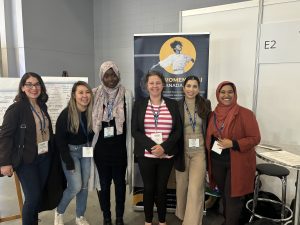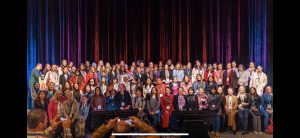This paper reports on recent developments of the Critical Action Learning Exchange (Carvalho et al., 2021), an international community of educators who seek to respond to social and environmental issues that affect their students. We report on an international design workshop that engaged a cohort of teachers in designing Critical Action Learning activities for their students in the Summer of 2023. Participants (n=39) completed 16 curriculum designs for grade levels from kindergarten to university, addressing a broad range of socio-environmental issues and adopting diverse approaches, such as Arts-Based Critical Action, Community Engagement, Critical Making, Games for Critical Action, and Storytelling. This paper examines our Professional Development model, together with an analysis of teacher participants’ ideas and their design products. We investigate what forms of scaffolding can facilitate the changes of practice needed for teachers to become critical action educators and support their Critical Action Learning designs.
Category: 2/ Hard Questions
Hard Questions by Sector
-

(Multi-disciplinary) Teamwork makes the (real) dream work: Pragmatic recommendations from industry for engineering classrooms
Many students choose to major in engineering to join the community of professional engineers and gain exposure to the field through their college experience. However, research suggests that engineering graduates may not be adequately prepared for the workplace due to the complexities of engineering work. Engineering work involves complexity, ambiguity, and contradictions, and developing innovation skills requires analyzing real-world problems that are often ill-defined and multifaceted. Therefore, it is essential for engineering students to have opportunities to work in multi-disciplinary teams to develop their skills in problem-solving and innovation. This emphasis on the need for exposure to multi-disciplinary problem solving holds true not only for undergraduate engineers in training, but also for graduate students focused on engineering education.
This paper draws from experiences of a multi-disciplinary team (including engineers, scientists, UX researchers, Industrial-Organization (I-O) psychologists, economists, and program and product managers) studying talent management in the tech industry, to present lessons learned from leading with science to understand, inform, and improve employee experiences at a large private technology company. Our paper exemplifies how projects in industry leverage multi-disciplinary expertise and presents recommendations for new graduates and engineering professionals. Ultimately, this paper affords an opportunity for educators to expand on examples of how multiple disciplines come together to study engineers in the workforce.
-

AI Governance for the Global Majority: Understanding Opportunities and Challenges
Artificial intelligence (AI) will impact individuals, communities, and institutions worldwide in both unique and universal ways. While public and private sector actors have begun to build the foundations for achieving more secure and trustworthy AI, the voices shaping the AI governance agenda are primarily from the Global North. To govern AI in a way that reflects a global range of contexts, it is imperative to adopt a more inclusive lens in defining its harms and opportunities. Broadly accepted AI governance principles may struggle to translate into practice without a more explicit focus on how priorities and challenges prevalent in the Global Majority intersect with AI.
-

Leveraging AI in education
To stay ahead, it is essential to adapt to the rise of AI by intelligently incorporating it into all levels of the education process
-

A Global South Perspective on Explainable AI
A context-driven approach is necessary to translate principles like explainability into practice globally. These vignettes illustrate how AI can be made more trustworthy for users in the Global South through more creative, context-rooted approaches to legibility.
-

De la gestión de crisis a la crisis de gestión: Responsabilidad y democracias liberales en el estallido de la pandemia de la COVID-19
El estallido de la pandemia de la COVID-19 conmocionó a las sociedades de todo el mundo. En su esfuerzo por adaptar sus respuestas a la crisis a sus propias condiciones de supervivencia, los gobiernos tendieron desde el principio a recurrir a argumentos que limitaban la rendición de cuentas frente a la población. Las democracias liberales no fueron ajenas a esta forma de abordar el problema. En ese contexto, sus dirigentes esgrimieron la metáfora de la guerra para describir su posición como garantes de la supervivencia de la población frente a la nueva amenaza. Atenazados entre la incertidumbre y la necesidad de predecir la naturaleza y la evolución del enemigo invisible, sus respuestas pusieron en entredicho la responsabilidad política, profesional y personal de los dirigentes. En este artículo se ofrece una reflexión sobre el nivel de responsabilidad de los gobiernos de las democracias liberales en la gestión de la pandemia. Durante la crisis, los decisores tendieron a dejarse llevar por las narrativas que les resultaban más beneficiosas para escabullirse de sus responsabilidades, apuntalando así sus necesidades políticas a corto plazo a través del uso de metáforas belicistas, el juego de culpas, la competición con otros países y la dispersión de las fuentes en el proceso de toma de decisiones. Esta realidad supone hoy un llamado a la reflexión a los actores sociales, incluidos los expertos, intelectuales y medios de comunicación, para trascender la retórica predominante en la gestión de la pandemia y la “nueva normalidad” que le siguió, de manera que la dinámica de alteraciones constantes de las reglas del juego y las responsabilidades pueda dar paso, en el futuro, a un escenario con menos arbitrariedad y más rendición de cuentas.
-

How Issav Asimov Predicted/Influenced the Present AI Scenario
This paper investigates Isaac Asimov’s impact on modern artificial intelligence (AI) and robotics, focusing on how his visionary narratives and Three Laws of Robotics resonate with current technological practices and ethical debates. Analyzing specific predictions from Asimov’s works that have materialized in today’s AI applications, we draw parallels between his fictional insights and real-world technologies from leading tech firms. The study further considers the social implications of AI, including issues of human displacement and trust. We also discuss the progress and challenges in formulating global ethical standards for AI, reflecting on national and international efforts. The analysis highlights Asimov’s lasting influence and the ongoing importance of ethical deliberation in the AI field.
-

Parameter efficient fine tuning: A comprehensive analysis across applications
The rise of deep learning has marked significant progress in fields such as computer vision, natural language processing, and medical imaging, primarily through the adaptation of pre-trained models for specific tasks. Traditional fine-tuning methods, involving adjustments to all parameters, face challenges due to high computational and memory demands. This has led to the development of Parameter Efficient Fine-Tuning (PEFT) techniques, which selectively update parameters to balance computational efficiency with performance. This review examines PEFT approaches, offering a detailed comparison of various strategies highlighting applications across different domains, including text generation, medical imaging, protein modeling, and speech synthesis. By assessing the effectiveness of PEFT methods in reducing computational load, speeding up training, and lowering memory usage, this paper contributes to making deep learning more accessible and adaptable, facilitating its wider application and encouraging innovation in model optimization. Ultimately, the paper aims to contribute towards insights into PEFT’s evolving landscape, guiding researchers and practitioners in overcoming the limitations of conventional fine-tuning approaches.







